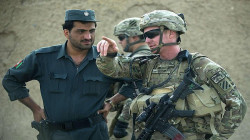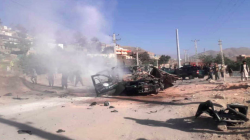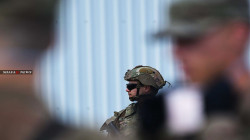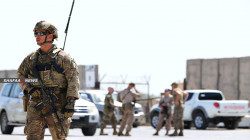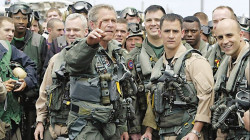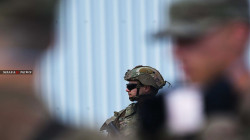Afghanistan’s Five Lions Gear Up For New Fight Against Taliban
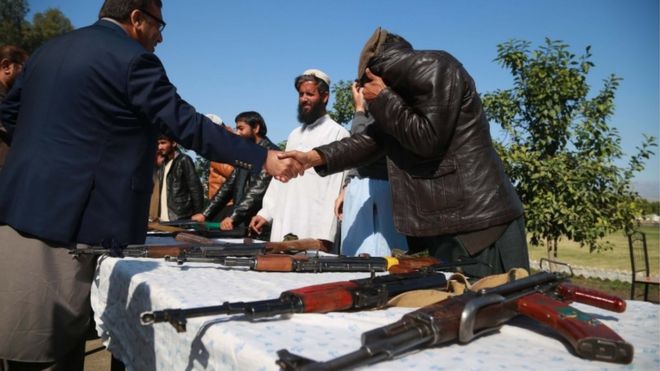
Shafaq News/ With its soaring cliffs and steep gorges, this famed region has never been conquered by invading forces during more than 40 years of war.
It was a bastion of resistance to occupying Soviet troops in the 1980s and later the Taliban, until that fundamentalist group's brutal regime was toppled by the U.S.-led invasion in 2001.
Now, residents of the Panjshir Valley, which spills from the Hindu Kush Mountains to within about 150 kilometers of Kabul to the south, are gearing up for a new fight against their old nemesis.
The Taliban has captured around half of Afghanistan’s roughly 400 districts and 10 of the country’s 34 provincial capitals in a blistering offensive since the final pullout of foreign forces began on May 1.
The insurgents have seized control of large swaths of territory bordering Panjshir, including nearly all of the northern provinces of Badakhshan, Takhar, and Baghlan, and parts of the eastern province of Laghman.
With the Taliban threatening outside their gates, hundreds of residents have taken up arms to help government forces repel the militants. Former combatants are also training a new generation of fighters.
‘Defend Their Homeland’
“We have started to give combat training to our young men,” says Abdul Ahad Mujahid, one of the instructors.
The 58-year-old is a former member of the mujahedin, the U.S.-backed Islamist guerrilla fighters who battled Soviet forces during Moscow’s 1979-89 occupation. He later joined the Northern Alliance, a coalition of anti-Taliban groups that resisted Taliban rule from 1996-2001.
“We train them for five weeks during which they learn to handle weapons and land mines,” Mujahid says. “Then they are ready to defend their homeland.”
Among the young men receiving training is Yusef Ahmadi.
"We are being trained so we have the skills that we need to fight the enemy. We have done physical fitness and drills. We are currently learning how to handle Kalashnikovs,” he says in reference to the Soviet-designed AK-47 assault rifle, the weapon of choice for guerrillas and militants around the world.
The Panjshir Valley, located in the province of the same name, has so far been largely shielded from Taliban attacks. But recently, the militants have encroached on the valley.
Taliban militants attacked government forces in Panjshir’s Abshar district on August 8, sparking clashes.
Nearly a year ago, the insurgents attacked the same district in an attempt to seize the government headquarters before they were pushed back. Police said 20 villagers were taken hostage by the Taliban but later released.
Abdul Basit, a 26-year-old, says scores of young men from his home district of Rokha are receiving military training.
"We don’t want to go to war without knowing anything,” he says. “We are getting valuable lessons from our instructors. They have experience of fighting the Soviets and the Taliban.”
When their training is completed, the young men will be tasked with defending their villages and districts alongside troops from the Afghan National Army and Afghan National Police.
Second Resistance
The trained fighters are part of the Second Resistance, a civilian militia led by the son of Ahmad Shah Masud, the legendary guerrilla commander who was killed by Al-Qaeda militants posing as journalists just days before the September 11 attacks nearly 10,000 kilometers away in the United States.
The militia headed by the younger Ahmad Masud, a 32-year-old who received his military education in Britain, numbers several thousand men. His fighters have vowed to protect Panjshir and have already been deployed to districts in neighboring provinces to fight alongside government troops.
The Second Resistance is among dozens of loosely formed pro-government militias known collectively as the Public Uprising Forces (PUF).
Kabul has hailed the creation of the militias as a bulwark against advancing Taliban militants. But many of them are loyal to powerful former warlords who hold significant sway in the provinces.
Afghan President Ashraf Ghani, a Western-educated technocrat who has been in office since 2014, has spent years sidelining the country’s key power brokers, many of them ex-warlords who view Kabul with suspicion and resentment.
Regional strongmen have been remobilizing their old militias lately in anticipation of what many expect to be a bloody new chapter in a decades-old conflict.
Armed groups loyal to regional and local warlords have rearmed and reappeared in the country’s northern, western, and central regions.
Their resurgence coincides with waning confidence in the weak Afghan government and beleaguered Afghan security forces ahead of the complete withdrawal of foreign forces from Afghanistan by August 31.
There are fears that the return of the private militias -- many organized along ethnic lines -- could further undermine support for the central government and drag Afghanistan back into the chaos of the 1990s.
During its brutal civil war from 1992-96, Afghanistan descended into lawlessness as warlords and the Taliban essentially carved up the country into fiefdoms. Rival ethnic militias fought pitched battles for control of Kabul, killing some 100,000 people and leaving the capital in tatters.
More than two decades later, it is unclear what the Taliban's new push toward Kabul -- and its defense by a second generation of "lions" like those mobilizing to meet the Taliban threat in Panjshir -- means for a population still desperate for an end to the fighting.
